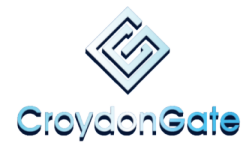The next installment of an Introduction to Paid Online Advertising addresses display advertising and paid search.
2 – Display Advertising
Display advertising, usually placed contextually, displays relevant advertisements to the people who are most likely to be interested in them, and this works because the ads displayed are chosen based on the content of the page. Although there are many contextual advertising networks, the Google Ads Display Network is the largest, reaching the vast majority of Internet users all over the world. One of the reasons for its popularity is that advertisers can choose from various formats to customise their ads and meet their budget requirements.
Given that the total coverage of Google’s Display network is over 90% of all Internet users in the English-speaking world, the reason for choosing it should be obvious. The publisher’s component to the advertising platform, Google Adsense, allows website owners to earn money from clicks on these advertisements as well, making it one of the easiest and most popular ways to monetise or support a website. You’ll find advertisements powered by this platform all over the Internet.
Display advertising comes in a variety of different formats, and Google Ads lets you choose from the following:
Text ads: The most basic format, Google allows you to run the same text ads in both the search engine results (see chapter on paid search) and on external websites. A text ad consists of a headline followed by up to two lines of text and a Web address. The headline also serves as a link.
Image ads: Static images provide a great deal more flexibility, since they allow you to choose from a range of layouts, images and background colours. Image ads also appear in the sidebar of the Google search results page, and in this case, they are based on the search queries themselves.
Video ads: As one of Google’s subsidiaries as well as the third most visited website in the world, YouTube is covered by Google’s advertising network, and as a result, video ads have become extremely popular in recent years.
Rich media ads: Some ads contain interactive elements, animations or other features that set them apart from the more standardised formats mentioned above. A rich media ad may also come in the form of a carousel displaying multiple products.
Google’s payment model is fairly straightforward, and it works much like most other online advertising companies: you only pay when someone clicks on one of your advertisements, thus being directed to your landing page. The cost per click varies depending on the targeted keywords and the type of advertisement. As with all such advertising programs, you can set a daily, weekly or monthly budget.
Although the most common type of ad targeting with the Google Display Network is contextual targeting, options for placing the ads on specific websites covered by the network are also available.
3 – Paid Search
Paid search advertising presents the opportunity to boost your website’s visibility in the search results when people search for relevant queries. In Google, the world’s most popular search engine, these advertisements appear in the form of sponsored listings at the top of the search results. They are clearly labelled as advertisements to differentiate them from the organic results beneath them. All of the major search engines provide a paid search platform.
The two largest paid search platforms are Google AdWords and Bing Ads, with the latter also serving ads on Yahoo. Paid search is a form of contextual advertising using the pay-per-click model, whereby advertisers only pay when someone clicks on their ads and consequently reaches their landing page. It is important to note at this point that these sponsored listings should not be seen as an alternative to organic search engine marketing, since the organic results of the first page actually get far more clicks than the more visible paid ads do.
As with any form of online marketing, it is critical that you target your efforts to the right people through a thorough understanding of your customer personas. Paid search traffic works very differently to organic traffic, and if someone clicks on a sponsored listing, then they’re likely intending to buy something rather than focus primarily on informational content, such as that which tends to appear in the organic search results.
Another form of paid search is that which specifically caters towards shopping. Those looking to buy a specific type of product online can click on the ‘Shopping’ tab above the results to view relevant products, and if you are an online retailer, it can be very useful to have your inventory listed in Google’s shopping search engine.
If, like most businesses, you plan to use Google AdWords for your display advertising campaign, you can create text ads that will also appear as sponsored listings in the search results. However, ads displaying visual content will only appear on external websites which have the publishers’ component AdSense installed.







